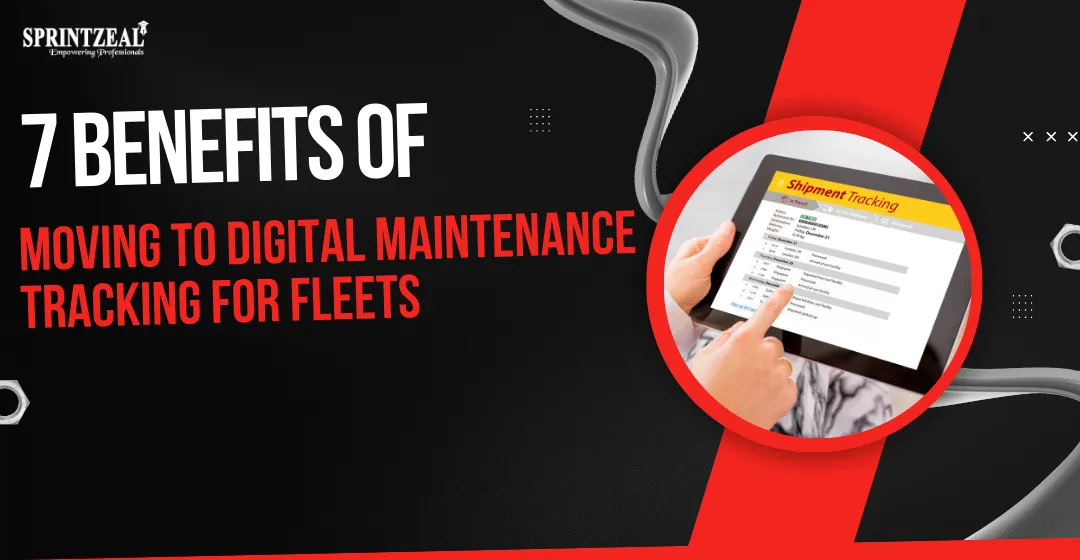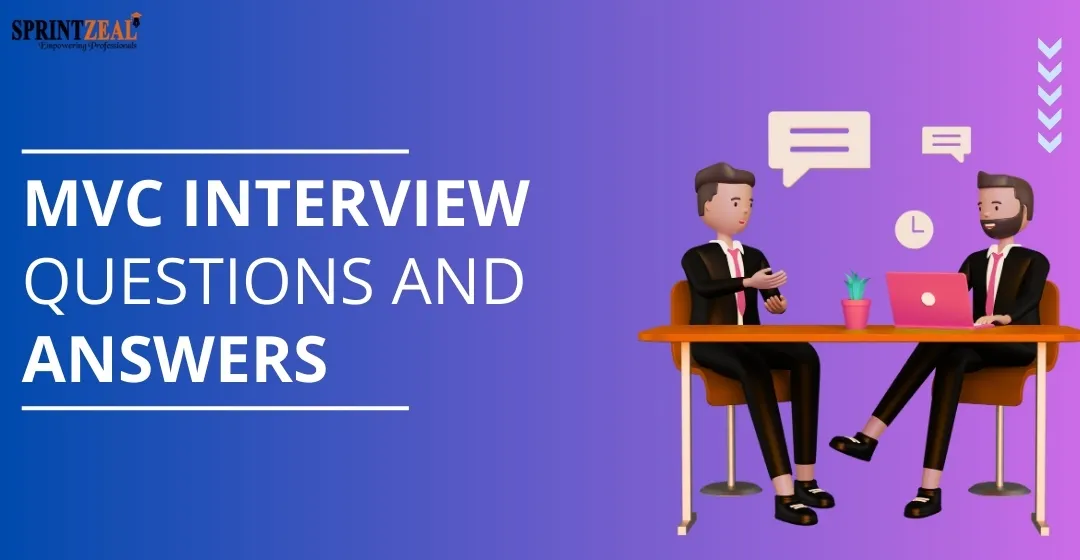Network Engineer Interview Questions List (2025)
-
 By Nchumbeni Yanthan
By Nchumbeni Yanthan - Published on Feb 18 2025

Table of Contents
- Latest Network Engineer Interview Questions and Answers 2025 Edition
- List of Top Network Engineer Interview Questions
- Top Network Engineer Interview Questions and Answers for Beginners
- Top Network Engineer Interview Questions and Answers for Intermediates
- Top Network Engineer Interview Questions and Answers for Experienced Professionals
- Top Network Engineer Interview Questions and Answers for Advanced Professionals
- Conclusion
- FAQs
Latest Network Engineer Interview Questions and Answers 2025 Edition
Network engineers regularly have wide positions. In a given quarter, they may be entrusted with anything from the execution and management of an inside network to sorting out why the company's switches aren't working any longer. If you're preparing for your next network engineering job interview, our guide on Network Engineer Career Path will provide invaluable insights and interview tips.
Presently, on the off chance that you are searching for a task that is associated with the Computer Network then you need to plan for the Computer Network Interview Questions.
PC Network is a bunch of PCs that are associated with one another for sharing assets. The significant sharing of assets over the association is the Internet.
The best illustration of a PC network is the Internet. Another example of PC networks is intranet facilities within organizations.
The facts confirm that each interview is distinctive according to the diverse occupation profiles.
Here, we have arranged the significant Computer Network Interview Questions and Answers to assist you with achieving your interview.
In this article, we have compiled a list of the top network engineer interview questions and answers to help you prepare. This list of common network engineer interview questions and answers has been compiled in consultation with industry experts and trainers.
List of Top Network Engineer Interview Questions
The top network engineer interview questions and answers have been divided into seven sets to help you segment them and prepare.
It is highly beneficial to go set by set in your preparation to be thorough and stand a good chance at securing the position.
Top Network Engineer Interview Questions and Answers for Beginners

1) What is a LAN?
A LAN stands for Local Area Network. It refers to the connection among computers and other network devices located within a small physical area.
2) What is a hub?
A hub refers to a point or joint where a connection occurs. It can be a computer or device that is part of a network. At least two hubs are needed to form a network connection.
3) What are switches?
Switches can connect two or more network segments. These are intelligent network devices that store information in their routing tables, like paths, hops, and bottlenecks. With this information, they can determine the best path for data to move. Switches work at the OSI Network Layer.
4) What is data encapsulation?
Data encapsulation is the process of breaking data into smaller, manageable pieces before it is transmitted across the network. In this process, source and destination addresses are appended to the headers, along with error checks.
5) Describe network topology.
Network Topology refers to the layout of a computer network. It shows how devices and cables are spread out, as well as how they connect.
6) What is a VPN?
A VPN stands for Virtual Private Network, a technology that allows a secure tunnel to be created across a network like the Internet. For example, VPNs enable you to set up a secure dial-up connection to a remote server, masking your IP geolocation to protect your identity and maintain privacy online.
7) What is NAT?
NAT stands for Network Address Translation. This is a protocol that provides a way for multiple computers on a common network to share a single connection to the Internet.
8) What is WAN?
WAN stands for Wide Area Network. It is an interconnection of computers and devices that are geographically dispersed. It connects networks located in different regions and countries.
9) What is the OSI Physical Layer?
The physical layer performs the transformation from data bits to electrical signals and vice versa. This is where network devices and cable types are considered and configured.
10) What is a proxy server?
Proxy servers primarily prevent external users from identifying the IP addresses of an internal network. Without knowledge of the correct IP address, the physical location of the network cannot be determined. This makes network locations more secure.
Top Network Engineer Interview Questions and Answers for Intermediates

1) What is the spine network?
A spine network is a centralized framework designed to distribute various routes and data to multiple networks. It also handles the management of bandwidth and multiple channels.
2) What is a hub-to-hub connection?
A hub-to-hub connection refers to a direct connection between two computers on a network. A hub-to-hub connection does not need any other network devices besides connecting a cable to the NIC cards of the two computers.
3) What is anonymous FTP?
Anonymous FTP is a way of granting user access to files on public servers. Users allowed access to data on these servers do not need to identify themselves but instead log in as anonymous guests.
4) What is a subnet mask?
A subnet mask is combined with an IP address to identify two parts: the extended network address and the host address. Like an IP address, a subnet mask is made up of 32 bits, and it determines the network and host portions.
5) What is the maximum length allowed in a UTP cable?
A single segment of UTP cable has an effective length of 90 to 100 meters. This limit can be overcome by using repeaters and switches.
6) How does network topology affect network setup?
Network topology dictates what media you should use to interconnect devices. It also serves as a basis for selecting the materials, connectors, and terminations suitable for the configuration.
7) What is RIP?
RIP, or Routing Information Protocol, is used by routers to send data from one network to another. It effectively manages routing data by broadcasting its routing table to all other routers within the network.
8) What is the importance of carrying out a Fault Tolerance System?
A fault tolerance system ensures continuous data availability by eliminating a single point of failure.
9) What does 10Base-T mean?
The 10 refers to the data transfer rate, which in this case is 10 Mbps. The term "Base" refers to baseband, as opposed to broadband.
10) How would you handle a network using a router?
Routers have a built-in console that allows you to configure various settings, such as security and data logging. You can assign restrictions to computers, like what resources they are allowed access to or when they can browse the Internet. You can also impose restrictions on what websites are not visible across the entire network.
11) Define the OSI model?
The OSI model is a 7-layer conceptual framework describing network communication. From top to bottom: Application (network services for apps), Presentation (data formatting and encryption), Session (communication sessions), Transport (reliable/unreliable delivery via TCP/UDP), Network (routing and IP addressing), Data Link (physical addressing and media access control), Physical (cables, connectors, and electrical signals).
12)What is the difference between Hub vs. Switch vs. Router?
A hub is a simple device that broadcasts all incoming traffic to every connected device, leading to collisions and poor performance. A switch learns MAC addresses and forwards traffic only to the intended recipient, improving efficiency. A router connects different networks and routes traffic based on IP addresses, enabling communication between networks and providing network segmentation.
Top Network Engineer Interview Questions and Answers for Experienced Professionals

1) What is COBIT® (Control Objectives for Information and Other Related Technologies)?
COBIT® is a framework for developing, implementing, and monitoring information technology and management practices. It is a framework by ISACA (Information System Audit and Control Association) designed for all IT governance to bridge the gap between technical issues, business risk, and control requirements.
2) What is the significance of carrying out a Fault Tolerance System?
Implementing a fault tolerance system ensures that data is continuously available by eliminating a single point of failure.
3) How does network topology affect network setup?
Network topology dictates what media you should use to interconnect devices and serves as a basis for selecting the materials, connectors, and terminations suitable for the configuration.
4) How are tunnels used in networking?
Tunnels create a virtual passage for data exchange between two communicating computers without using IPsec themselves. The gateway connecting their LANs to the transit network creates a virtual tunnel and uses the IPsec protocol to secure all communication passing through it.
5) Explain the significance of Encryption on a network.
Encryption is the process of encoding information into a code that is unintelligible to unauthorized users. This data is then decoded or decrypted back to its normal, readable format using a secret key or password. Encryption ensures that data intercepted in transit remains unreadable, as the user must have the correct password or key to decrypt it.
6) What is multicast routing?
Multicast routing is a form of broadcasting that sends a message to a selected group of recipients rather than transmitting it to all users on a subnet.
7) What is a private IP address?
Private IP addresses are assigned for use on intranets. These addresses are used for internal networks through the IP address and are not routable on external public networks. This ensures that no conflicts are present among internal networks.
8) What is the OSI Session Layer?
The OSI Session Layer provides the protocols and means for two devices on the network to communicate with each other by holding a session. This includes establishing the session, managing data exchange during the session, and terminating the session upon completion.
9) What are proxy servers, and how do they protect computer networks?
Proxy servers primarily prevent external users from identifying the IP addresses of an internal network. Without knowledge of the correct IP address, the physical location of the network cannot be determined. This data on IP addresses can help identify the network's location. Proxy servers can make a network invisible to external users.
10) What is the function of the OSI Session Layer?
The OSI Session Layer provides the protocols and means for two network devices to communicate with one another through a session.
Session Establishment, Session Management and Session Termination involve everything from creating the session to exchanging data during the session and then terminating the session on completion.
Top Network Engineer Interview Questions and Answers for Advanced Professionals

1) What is the profile in terms of networking concepts?
Profiles are the configuration settings created for each user. A profile could be created that places a user in a group, for example.
2) What is sneakernet?
Sneakernet is believed to be the earliest form of networking where data is physically transferred using removable media, such as a disk or tapes.
3) What protocols fall under the TCP/IP Internet Layer?
Four protocols are managed by this layer: ICMP, IGMP, IP, and ARP.
4) When it comes to networking, what are rights?
Rights refer to the authorized permission to perform specific actions on the network. Each user on the network can be granted individual rights, depending on what needs to be considered by that user.
5) What is one fundamental requirement for establishing VLANs?
VLANs are required at the switch level. There is only one broadcast domain at the switch level. This means whenever a new user is connected to a switch, they become part of the same broadcast domain, so VLANs are needed to separate these domains.
6) What are some important factors to take into account when creating a network disaster recovery plan?
A number of factors need to be cautiously considered when designing a solid disaster recovery plan. Recovery Point Objective (RPO) sets up the maximum allowable data loss, so although Recovery Time Objective (RTO) the maximum allowable downtime. Duplication, which includes hardware, links, and geographically diverse locations, is crucial. It is essential to set up and test thorough data backup and restoration protocols on a regular basis. Minimize manual intervention by implementing automated failover mechanisms. To make sure the plan is effective, it needs to be well documented and tested frequently. Solutions for disaster recovery that are cloud-based offer greater scalability and flexibility.
7) How do you secure a network against DDoS attacks?
Defending against Distributed Denial of Service (DDoS) attacks requires a multi-layered approach. Rate limiting restricts the number of requests from a specific source. Traffic filtering, using ACLs and BGP flowspec, blocks malicious traffic patterns. Intrusion Detection/Prevention Systems (IDS/IPS) identify and block attack signatures. DDoS mitigation services, either cloud-based or on-premise, can absorb large volumes of attack traffic. Over-provisioning bandwidth provides additional capacity. Using a Content Delivery Network (CDN) distributes traffic, making it harder to overwhelm the origin server.
8) Explain the difference between network address translation (NAT) and port address translation (PAT).
Network Address Translation (NAT) translates one public IP address to one private IP address, allowing devices on a private network to access the internet. Port Address Translation (PAT), a type of NAT, translates one public IP address to multiple private IP addresses by using port numbers to distinguish between different connections. PAT is commonly used in home and small office networks, allowing multiple devices to share a single public IP address provided by the ISP. It conserves public IP addresses and enhances security by hiding the internal network structure.
9) How does utilizing a network monitoring system (NMS) benefit you?
There are many benefits to using a Network Monitoring System (NMS). It allows for proactive detection of possible troubles before they affect users by offering centralized monitoring of all network devices and performance measures. Capacity planning is made simpler by NMS, which monitors growth patterns and bandwidth usage. It makes thorough performance analysis possible in order to locate bottlenecks and that further effectiveness. NMS offers detailed logs and diagnostic data to help with faultfinding. Greater responsiveness and reduced maintenance are made possible by automated reporting for important events. Network visibility, dependability, and management effectiveness are ultimately enhanced by NMS.
10) What is the purpose of Border Gateway Protocol (BGP)?
Border Gateway Protocol (BGP) is the essential routing protocol used between different Autonomous Systems (AS) on the internet. An AS is a network under a single administrative domain, like an ISP or a large organization. BGP's primary purpose is to exchange routing information between these ASes, enabling internet-wide connectivity. Unlike interior gateway protocols, BGP is a path-vector protocol, meaning it considers the entire path of ASes when choosing the best route to a destination. This helps prevent routing loops and allows for policy-based routing between ASes.
11) Explain the concept of Quality of Service (QoS) and how it works.
Quality of Service (QoS) is a set of techniques used to prioritize different types of network traffic, ensuring optimal performance for critical applications. It works by first classifying traffic based on criteria like source/destination IP, port numbers, or application type. Packets are then marked with a QoS value. Mechanisms like queuing (different queues for different traffic types), scheduling (prioritizing certain queues), and shaping (controlling the rate of traffic) are used to allocate bandwidth and prioritize important traffic flows. This minimizes latency and jitter for real-time applications like voice and video, while ensuring other traffic types receive appropriate service.
12) What is network segmentation and why is it important?
Network segmentation divides a network into smaller, isolated subnetworks, often using VLANs. This offers several key benefits. It significantly improves security by limiting the "blast radius" of security breaches. If one segment is compromised, the impact is contained, preventing the entire network from being affected. Segmentation can also enhance performance by reducing broadcast traffic within each segment. This reduces congestion and improves overall network efficiency. It also simplifies network management by allowing administrators to manage smaller, more manageable units.
13) What are some common causes of network congestion?
Network congestion occurs when the demand for bandwidth exceeds the available capacity. Several factors can contribute. Excessive traffic from users or applications can overwhelm network links. Insufficient bandwidth on critical links creates bottlenecks. Faulty network devices, like malfunctioning switches or routers, can cause performance degradation. Misconfigured Quality of Service (QoS) can lead to unfair bandwidth allocation. Broadcast storms, where excessive broadcast traffic floods the network, can cripple performance. Finally, application bottlenecks, where a server or application can't keep up with requests, can also manifest as network congestion.
14) What is the difference between IPv4 and IPv6?
IPv4 (Internet Protocol version 4) uses 32-bit addresses giving about 4.3 x 10^9 unique addresses. This address space is running out quickly because the Internet has exploded. Internet Protocol version 6 (IPv6) employs 128 bit addresses, allowing an astronomically larger address space (effectively limitless) to support the explosive growth of internet connected devices.
Next to the address space, IPv6 provides enhancements like a reduced header format for faster processing, autoconfiguration (simplified device initial setup), and more optimization for mobile environments.
15) What are some best practices for wireless network security?
Wireless protection is key to safeguarding confidential data. Passwords need to be strong (WPA2 and WPA3 encryption). Disabling SSID broadcasting reduces the network to hardcore scanners. MAC address filtering keeps other devices from connecting to your network Implementing a firewall is the second level of defence.
Instead, Keep patching the firmware regularly to get rid of security holes. Putting guest networks separate from the main network removes clueless access. And we should never underestimate the importance of a security audit, in order for penetration testers help us identify any holes.
Conclusion
Network Engineering has become a popular career choice amongst a lot of professionals these days. This is motivated by the lucrative compensation made by qualified Network Engineers.
To secure a good job in this domain, it is important to be thorough with the top network engineer interview questions and answers. This list has been compiled by industry experts to help you land a good job.
It is recommended that you do a training course from a reputed training partner like Sprintzeal to help lay a strong knowledge base in this domain.
This knowledge combined with the studying of these top network engineer interview questions and answers will help you in your career. Platforms like EduBirdie can also assist by helping you organize notes, create practice questions, or clarify difficult concepts efficiently, making your preparation more structured and focused.
If you are headed for your interview, be sure to go through this blog on top network engineer interview questions and answers to have a good chance of securing it. All the best! Explore Online networking and cybersecurity certification courses from Sprintzeal. To get full details about top certifications, chat with our course expert.
Explore CompTIA Certifications:
CompTIA A+ Certification Training from Industry Experts
Get CompTIA Security+ Training and Earn the Certification
CompTIA SecurityX Certification Training – online, live online and classroom
CompTIA Pentest+ Certification Training
To get full details about CompTIA certification training, reachout for course assistance.
Never miss an update on valuable resources and special training offers; subscribe to Sprintzeal's newsletter today!
FAQs
How do I prepare for a network engineer interview?
Technical fundamentals (OSI/TCP/IP, routing, switching, subnetting, and security) focus on hands-on, in-lab lab(labs/project/certification) not surely technical assistant roles needed or at least some of it.
What is an L1, L2, or L3 network engineer?
These terms are typically defined by the level of experience and often mapped to the OSI Model: L1 (cabling), L2 (Data Link—switching), and L3 (Network—routing).
What are the 3 levels of network engineers?
The 3 levels of network engineers are Junior (basics/admin and troubleshooting), mid-level (design/implement/maintain), Senior/Architect (lead design/plan—mentor).
How do I pass a network interview?
Technical skills backed with hands-on experience, problem-solving, written & verbal communication, fascination, and exhaustive preparation.
Subscribe to our Newsletters
Popular Programs
CCNP® - Cisco Certified Network Professionals
Live Virtual Training
- 5 (741 + Ratings)
- 42k + Learners
CCIE® Enterprise Wireless - Cisco Certified Internetwork Wireless
Live Virtual Training
- 4.4 (789 + Ratings)
- 30k + Learners
CCIE® Data Center V3.0 - Cisco Certified Internetwork Expert Data Center
Live Virtual Training
- 4.4 (785 + Ratings)
- 52k + Learners
CCDP® - Cisco Certified Design Professional
Live Virtual Training
- 4.5 (763 + Ratings)
- 67k + Learners
Trending Posts
How to Become a Network Engineer?
Last updated on Sep 3 2025
7 Benefits of Moving to Digital Maintenance Tracking for Fleets
Last updated on Aug 15 2025
MVC Interview Questions and Answers 2025
Last updated on Sep 19 2025
Excel Skills Proficiency Guide: Beginner to Advanced Levels
Last updated on Oct 15 2025
CompTIA Certifications List - Top 5 CompTIA Certifications to Explore
Last updated on Feb 10 2023
CompTIA CASP Certification Benefits
Last updated on Jul 27 2022
Categories
- Other 62
- Agile Management 57
- Cloud Computing 50
- Project Management 170
- Big Data 58
- Business Management 79
- Digital Marketing 73
- IT Service Management 29
- Programming Language 47
- AI and Machine Learning 67
- IT Security 108
- Quality Management 77
- IT Hardware and Networking 25
- Microsoft Program 4
- Workplace Skill Building 11
- Risk Management 9
- Information Security 8
- Leadership and Management 7
- Corporate Training and Development 1
Trending Now
Cisco Certification List – Top certifications to advance in your career
ArticleCompTIA CASP Certification Benefits
ArticleCompTIA Interview Questions and Answers 2025
ArticleCCNA Interview Questions and Answers in 2024
ArticleNetwork Analyst Interview Questions and Answers in 2024
ArticleSystem Analyst Interview Questions and Answers 2025
ArticleSystems Administrator Interview Questions and Answers 2024
ArticleHow to Become a Network Engineer?
ArticleCompTIA Certifications List - Top 5 CompTIA Certifications to Explore
ArticleCCNA vs CCNP - Which Cisco Certification is Right for you?
ArticleCompTIA CASP+ and CompTIA PenTest+ Exams Retirements
ArticleCompTIA A+ Certification Latest Exam Update 2025
ArticleNetwork Scanning: How it Works, Tools, Types, and Benefits
ArticleNetwork Analyst: How to Become, Skills and Career Guide
ArticleHow to Become a System Administrator: Expert Guide for 2025
ArticleHow to Become a Systems Analyst? Step-by-Step Guide
ArticleTime-Saving Tech Tools Every Professional Should Be Using
ArticleHow a Custom ASP.NET Application Can Streamline Your Business Operations!
ArticleThe Ultimate Guide to Top Proxy Service Providers (2025)
ArticleHow to Recover Hard Drive Data After Accidental Formatting or Deletion: A Guide for IT Professionals
Article7 Benefits of Moving to Digital Maintenance Tracking for Fleets
ArticleMVC Interview Questions and Answers 2025
ArticleMost Frequently Asked Mainframe Interview Questions 2025
ArticleExcel Skills Proficiency Guide: Beginner to Advanced Levels
Article

















